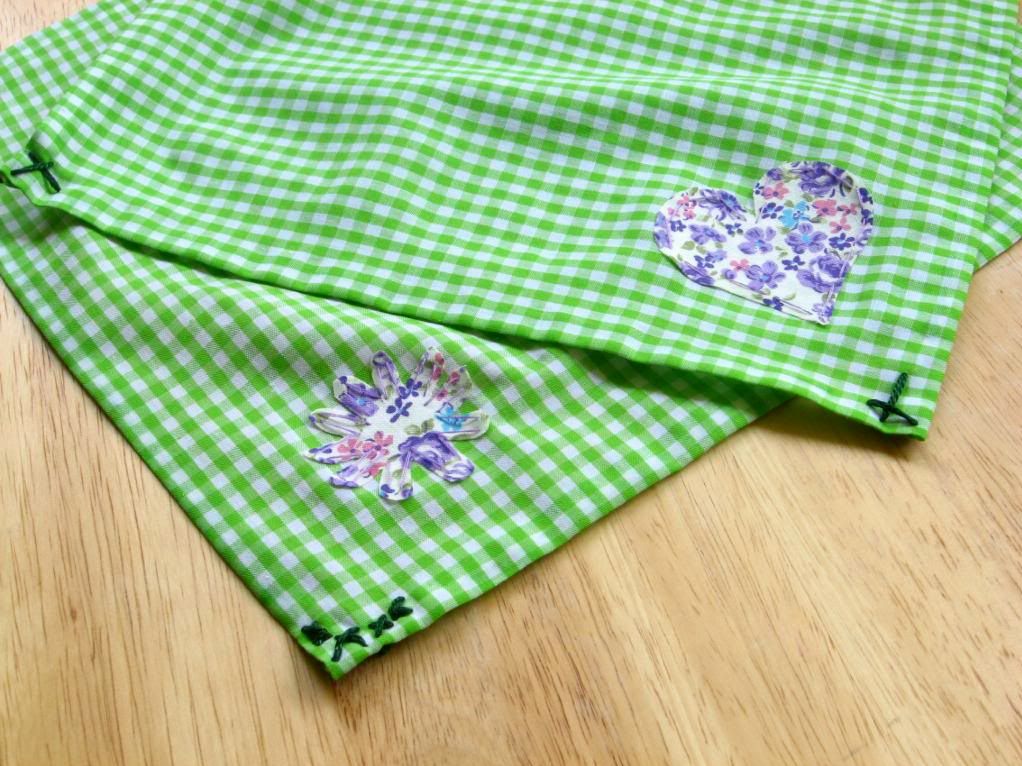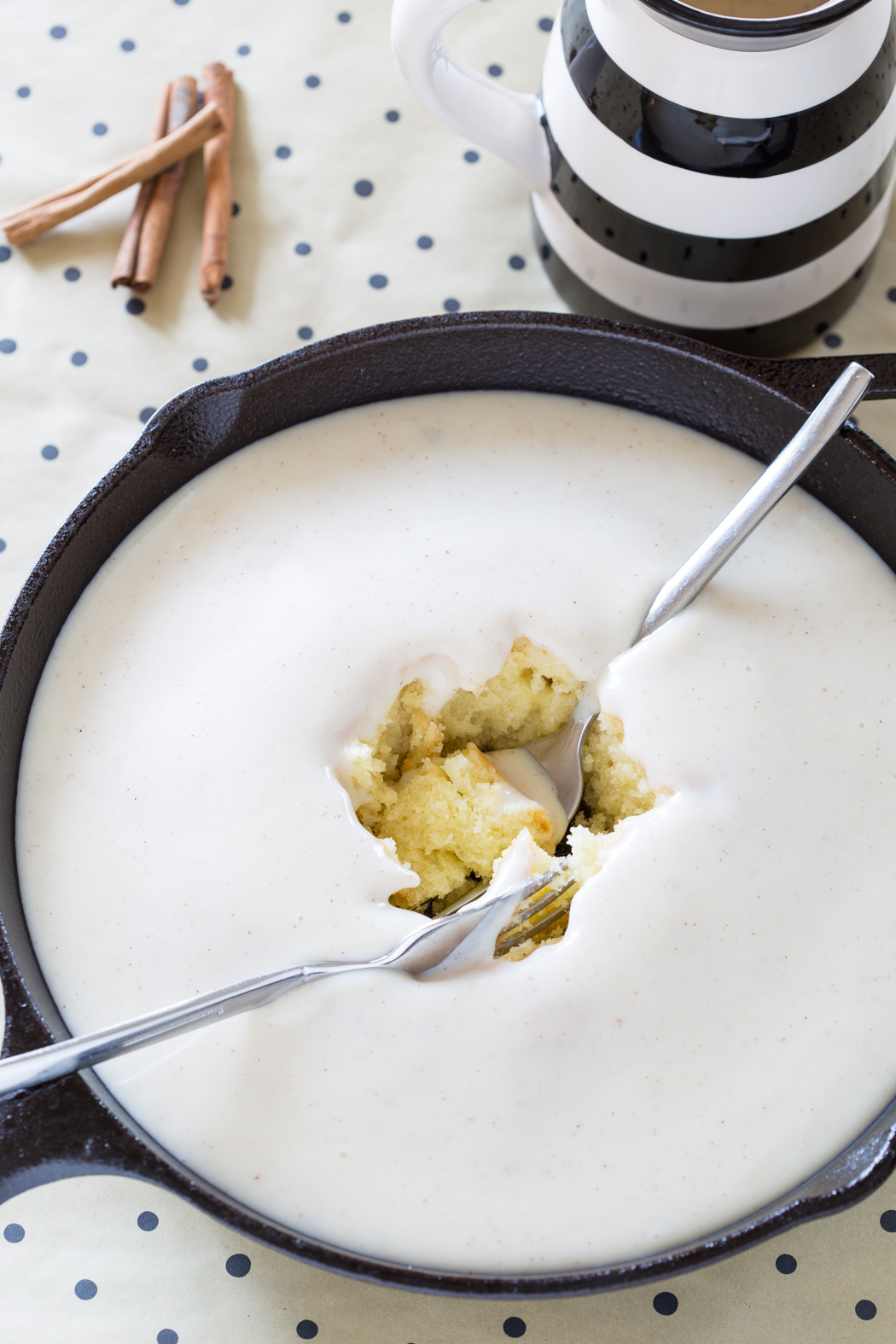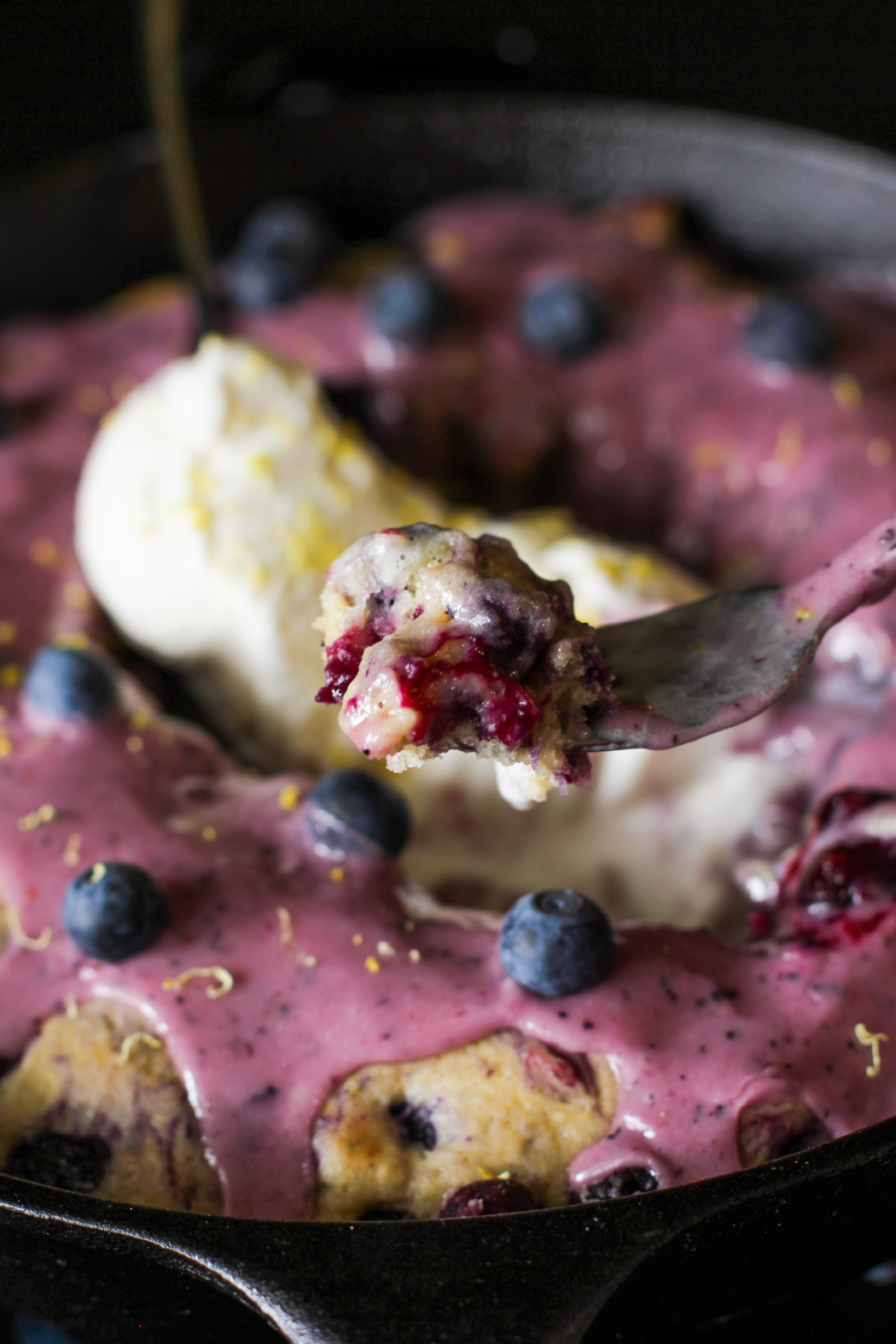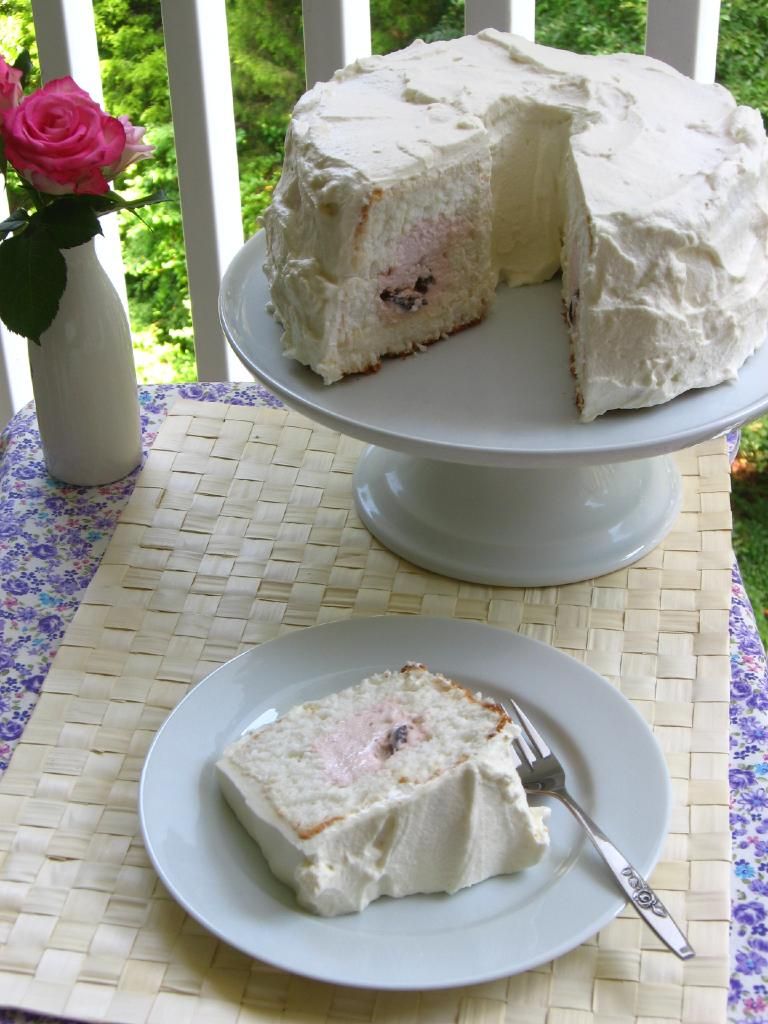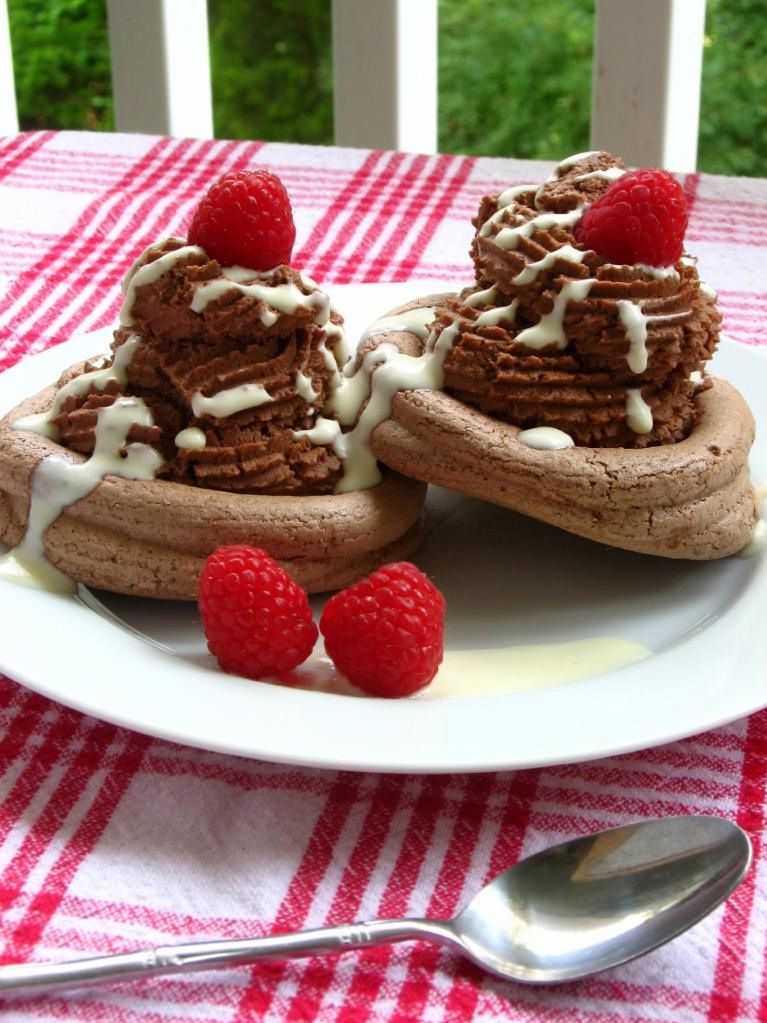I just sat down to write a beautiful post about rain on nighttime windows, the birdcry of feathery sentinels on the dark, and the gentle crunch of a buttery croissant. Moments of transcendence . . .

. . . and then I found a glob of meringue stuck in my hair. Not related to gorgeous French pastries, but I knew you’d want to know.
Back to pastry. Certain achievements in the kitchen really ice the culinary cake for me. These croissants are without a doubt my proudest moment in the kitchen thus far.
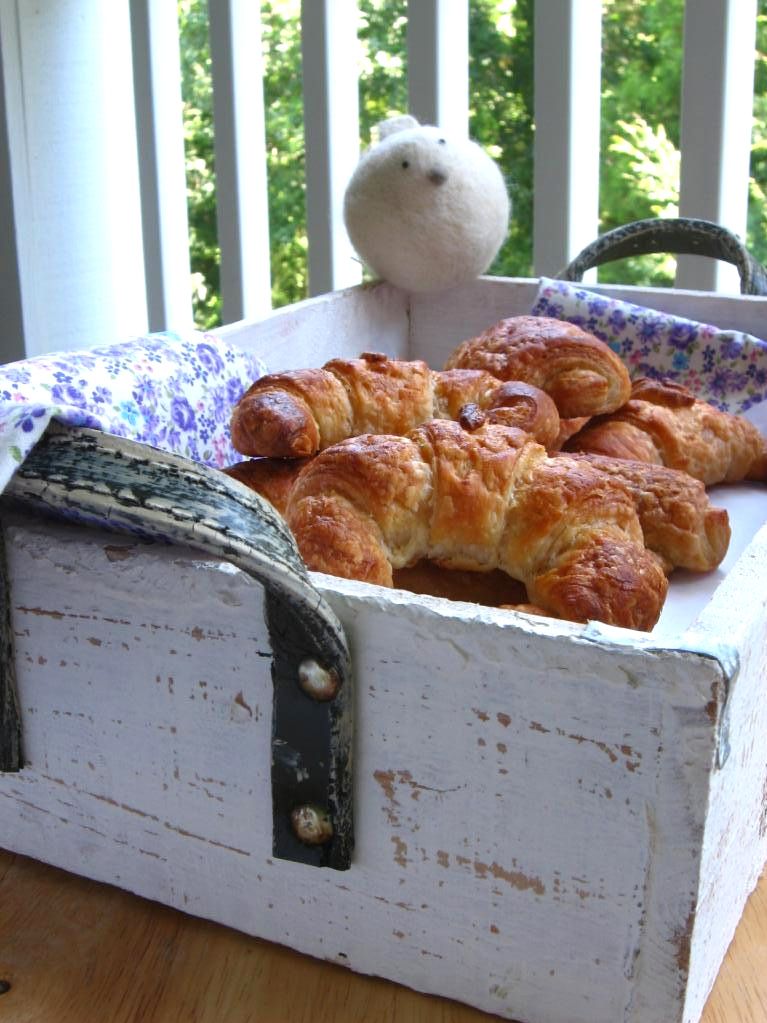
I understand the sentiment I’ve heard so often, expressed by so many people: “Why make it, when you can get it from the store or bakery and it’s just as good?” That’s fine. Sometimes you want a sheet of puff pastry as a means to an end. Sometimes you just want a croissant without two days of work. I get it. I’m not a food snob. Even though I think you’d sacrifice some taste in the croissant department, if you want a pre-made croissant every now and then, go for it. But . . .
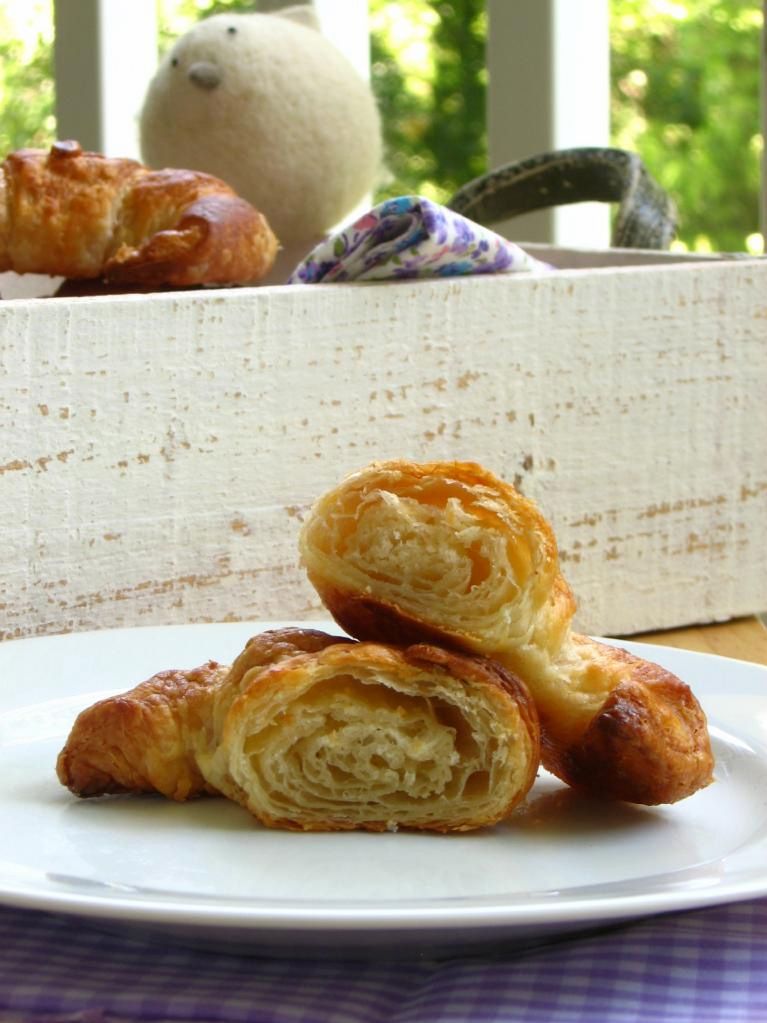
Beautiful layers.
But I have a goal. My goal is to inspire you, at least once, to make these croissants. When I say “you,” I don’t mean Martha Stewart. I doubt she’s in my readership just yet. I mean you. You who have only made box cakes. Or you who bakes up a storm but feels intimidated by this whole “laminated dough” thing. Or you who thinks you could never accomplish this. I want to make you take a chance. If you’ve never made croissants before, I’m talking to you.
You.
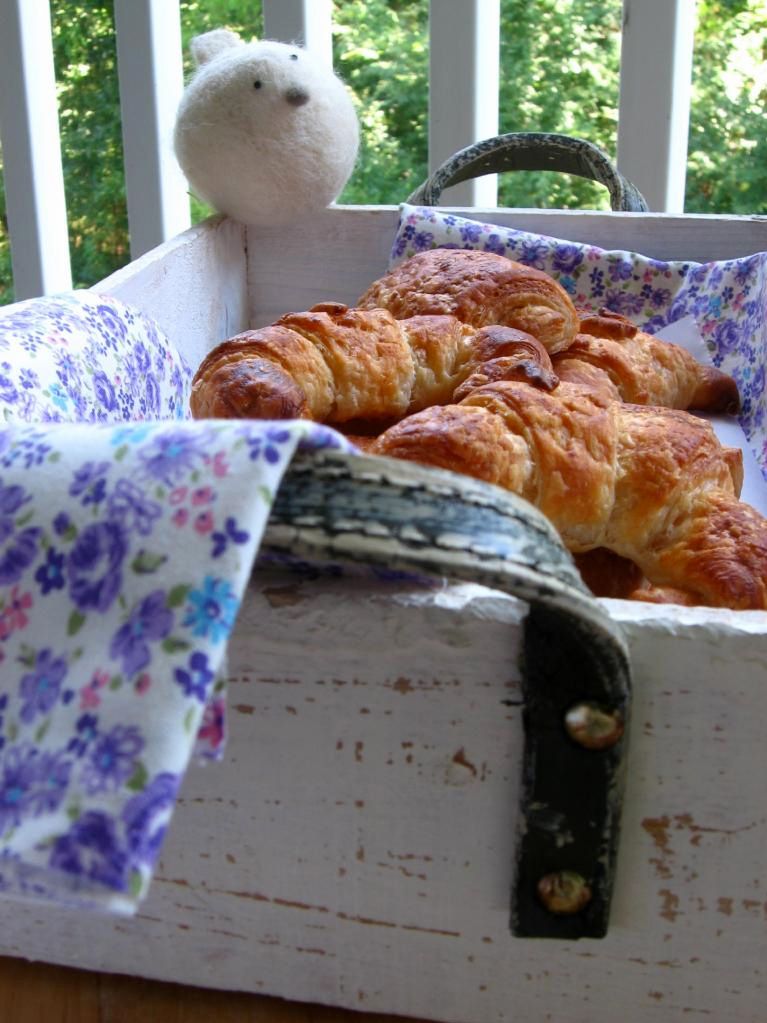
I was nervous, too. There are pages dedicated to croissant comparisons, discussions about how to get the best layering, and hundreds of thousands of mixed recipe reviews to wade through. I saw pictures of failed attempts and read overly detailed and confusing instructions.

In a laminated dough like this, you pound sticks of butter into a thin block and fold them into the dough like a letter in an envelope. The “laminating” process involves rolling out this dough package containing the cold butter layer, folding it, and rolling it out again. Lots of chilling occurs between these folds to ensure the butter stays cold.
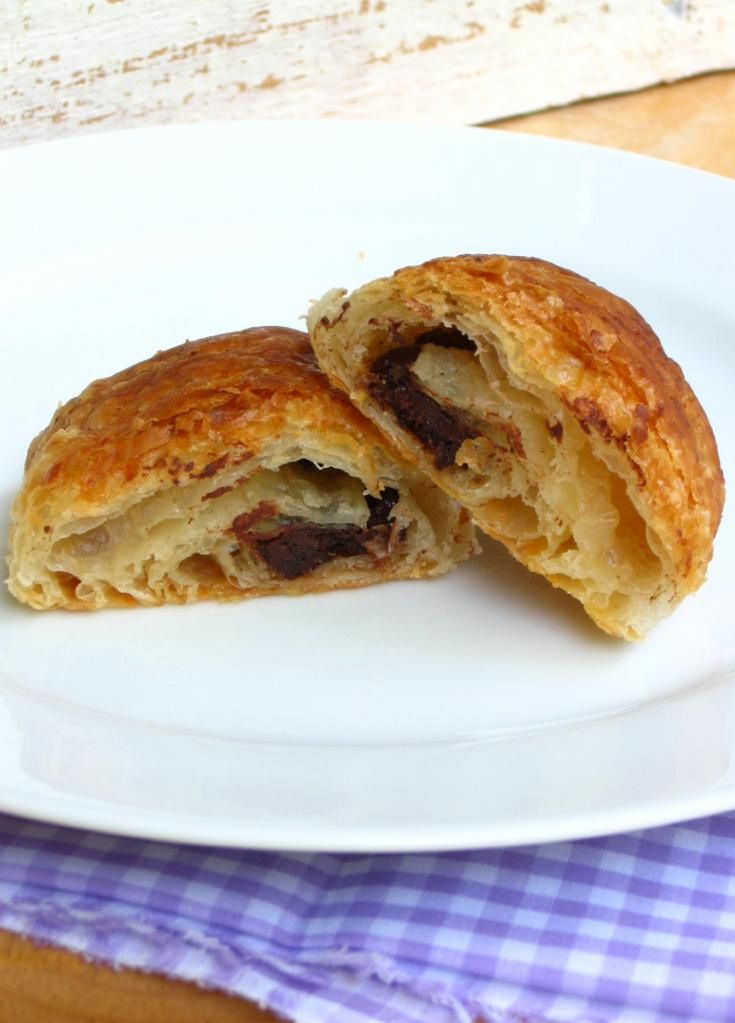
Cross-section of a pain au chocolat.
Each fold produces layers of dough-butter-dough-butter, allowing for those gorgeous puffy layers you get when you finally shape and bake the croissants. Having made puff pastry before, I knew that if I could get past the first fold of the dough, I could complete the recipe. The dough becomes so much more manageable at that point, and it’s really just repetition from there until the end. But would I get there with this notoriously sticky dough? And why did the first fold seem so far away when I was standing in my kitchen with gloppy fingers? I was scared.
But you don’t have to be scared. If I did it, you can do it.
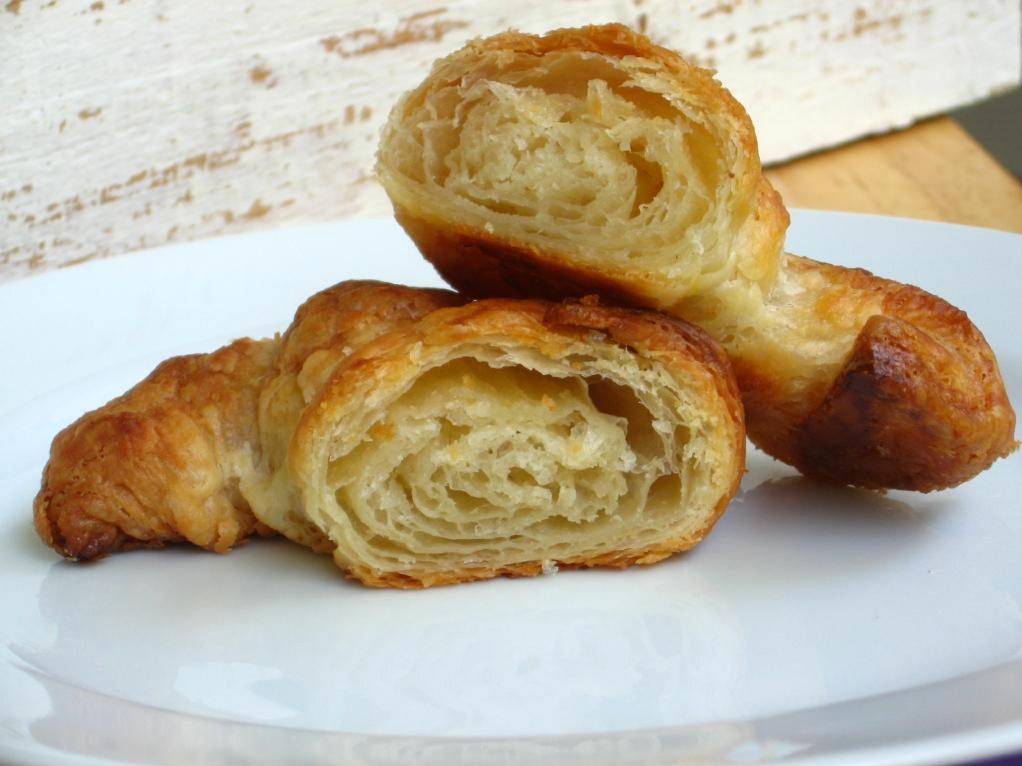
Another gratuitous cross-section of a croissant.
You may shudder at two days of kitchen labor, but you get in the swing of the turns after the first one and feel pretty amazing every time you nestle your beautiful rectangle of croissant dough into the fridge again. Even though the recipe looks long, it’s actually extremely straightforward, detailed, and simple to follow. But the real reason you should bake these croissants, though, is to have these croissants. To say the results are worth it is an understatement.

Apart from an incredible self-esteem boost, this recipe yields truly beautiful French pastry. The deep golden brown crust is slightly crisp, and every layer is full of intense buttery flavor. I had envisioned topping these croissants with honey and jam and all sorts of goodness, but couldn’t bring myself to put a thing on them except a bit of butter. They were too perfect all by themselves.
Also making your effort worthwhile is the fact that these are easily frozen after shaping and before proofing — so you can thaw overnight, proof, and bake a few anytime you desire. Baking up French pastry that melts in your mouth with every bite? Having a stash of homemade croissants waiting in your freezer? Knowing that you made those flaky, heavenly layers your family is relishing? It’s worth it, y’all.

Now. Rubber, meet Road. Here’s my challenge to you. I want you to commit in the comments section to make these croissants. If just one person who previously thought, I could never do that, ends up pulling their homemade croissants from the oven because of this post, I will be one happy food blogger.
I’ve included several resources within the recipe to help you with some of the parts you may not be familiar with just yet. I’m also available to answer any question you’ll post in the comments section as best as I can. I want you to feel the same joy I felt at accomplishing this feat, and I want you to taste these delicacies. What do you say?
|
Committed to Croissant
Maranda MARANDA MASTERED CROISSANTS!Amy AMY MASTERED CROISSANTS!- LizzieBee of A City Girl Gone Country
- Blogless Sarah
- Blogless Sara
Emily EMILY MASTERED CROISSANTS!- Courtney
Blogless Hannah HANNAH MASTERED CROISSANTS!- Maia
- Blogless Eric
- Blogless Ellen
- Blogless Bryn
Kat KAT MASTERED CROISSANTS!- Blogless Eris
- Peggy of My Fiance Likes It, So It Must Be Good
Blogless Kirsten KIRSTEN MASTERED CROISSANTS!- Blogless Nathan
Blogless Amanda AMANDA MASTERED CROISSANTS!- Your Name Here!
|
If you’ve committed to croissant and don’t see your name on the list, please leave a comment and let me know I’ve missed you! After you make your croissants, please let me know how it went and send pictures (if you can) of you with your masterpiece. I’ll be posting them on Willow Bird Baking to show you off!
Homemade Butter Croissants or Pains au Chocolat
Recipe by: Adapted slightly from Gourmet
Yields: Around 24 small croissants or 36 small pains au chocolat
Ingredients:
1 1/2 cups whole milk, heated to warm (105°F–110°F) (use a candy thermometer to determine)
1/4 cup packed light brown sugar
1 tablespoon plus 1/4 teaspoon active dry yeast (from two 1/4-oz packages)
3 3/4 to 4 1/2 cups unbleached all-purpose flour
1 tablespoon kosher salt
3 sticks (1 1/2 cups) cold unsalted butter (I used Plugra European butter)
1 egg, lightly beaten, for egg wash
1 teaspoon cream or milk for egg wash
chocolate batons or bittersweet chips for pain au chocolat, if desired
Equipment to have on hand:
Stand mixer with dough hook
candy thermometer
kitchen towels
Ruler
Pastry scraper
Pastry brush
Parchment paper or silpat
Spray bottle (although I improvised — see below)
Directions:
Make dough:
Stir together warm milk, brown sugar, and yeast in bowl of standing mixer and let stand until foamy, about 5 minutes. (If it doesn’t foam, discard and start over.) Add 3 3/4 cups flour and salt and mix with dough hook at low speed until dough is smooth and very soft, about 7 minutes.
Transfer dough to a work surface and knead by hand 2 minutes, adding more flour as necessary, a little at a time, to make a soft, slightly sticky dough. Form dough into a roughly 1 1/2-inch-thick rectangle and chill, wrapped in plastic wrap, until cold, about 1 hour.
Prepare and shape butter:
After dough has chilled, arrange sticks of butter horizontally, their sides touching, on a work surface. Pound butter with a rolling pin to soften slightly (butter should be malleable but still cold). Scrape butter into a block and put on a kitchen towel, then cover with other towel (I wrapped them in plastic wrap instead, but it did break at one point). Pound and roll out on both sides until butter forms a uniform 8- by 5-inch rectangle. Chill, wrapped in towels, while rolling out dough.
Roll out dough:
Unwrap dough and roll out on a lightly floured surface, dusting with flour as necessary and lifting and stretching dough (especially in corners), into a 16- by 10-inch rectangle. Arrange dough with a short side nearest you. Put butter in center of dough so that long sides of butter are parallel to short sides of dough. Fold as you would a letter: bottom third of dough over butter, then top third down over dough. Brush off excess flour with pastry brush.
Roll out dough:
Turn dough so a short side is nearest you, then flatten dough slightly by pressing down horizontally with rolling pin across dough at regular intervals, making uniform impressions. Roll out dough into a 15- by 10-inch rectangle, rolling just to but not over ends.
Brush off any excess flour. Fold in thirds like a letter, as above, stretching corners to square off dough, forming a 10- by 5-inch rectangle. (You have completed the first “fold.” Make one impression in the dough with a finger to remind yourself that one fold is finished.) Chill, wrapped in plastic wrap, 1 hour.
Make remaining “folds”:
Make 3 more folds in same manner, chilling dough 1 hour after each fold, for a total of 4 folds. (If any butter oozes out while rolling, sprinkle with flour to prevent sticking.) Wrap dough tightly in plastic wrap and chill at least 8 hours but no more than 18 (after 18 hours, dough may not rise sufficiently when baked). NOTE: This is when you can let the dough hang out in the fridge overnight and get some rest, you croissant-makin’ superstar!
Roll out and cut dough:
Cut dough in half and chill 1 half, wrapped in plastic wrap. Roll out other half on a lightly floured surface, dusting with flour as necessary and stretching corners to maintain shape, into a 16- by 12-inch rectangle. Brush off excess flour with pastry brush and trim edges with a pizza wheel or sharp knife.
Arrange dough with a short side nearest you. Cut in half horizontally and chill 1 half. Cut remaining half vertically into thirds, forming 3 rectangles. Cut each rectangle diagonally in half to make 2 triangles, for a total of 6 triangles. If you’re making pain au chocolat as well, cut some of the dough into smaller rectangles (see my example diagram, below).
For the more visual among you, here’s a diagram I drew of how I ultimately rolled my two halves of dough (note that you need to work with a portion of the dough at a time to keep the rest chilled). This diagram shows you how I cut the dough to make 18 croissants and 9 pains au chocolat (the rectangles):
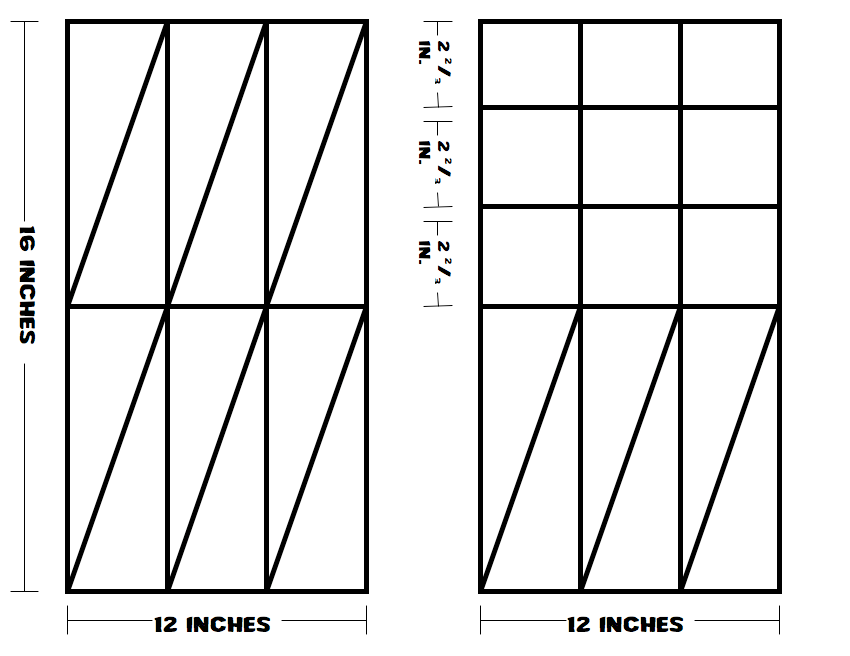
Shape croissants:
Holding short side (side opposite tip) of 1 triangle in one hand, stretch dough, tugging and sliding with other hand toward tip to elongate by about 50 percent.
Return to work surface with short side of triangle nearest you. Beginning with short side, roll up triangle toward tip. Croissant should overlap 3 times, with tip sticking out from underneath; you may need to stretch dough while rolling.)
Put croissant, tip side down, on a parchment-lined large baking sheet. (Curve ends inward to make a crescent shape if desired, joining their cute little arms. They won’t stay joined during proofing, but this will help ensure that they do maintain their shape. I used a minute drop of water to seal their arms closed if the dough seemed dry.)
Make more croissants with remaining 5 triangles, then with remaining rolled-out dough, arranging them 2 inches apart on baking sheet. Repeat rolling, cutting, and shaping procedures with chilled piece of dough. Note: To make pain au chocolat, simply place a chocolate baton or bittersweet chips on one side of the rectangle (about 1/4-inch from the edge) and roll it up — very simple!)
Freeze croissants, if desired: This is the point at which you may place shaped, unproofed croissants on a baking sheet lined with wax paper in the freezer for an hour or two, until frozen. Then place them in a ziplock bag and freeze. They’re absolutely best when baked within a week. When ready to bake (from frozen), thaw overnight in the refrigerator and proceed to the proofing step as normal. If not freezing, skip this step entirely and proceed to proofing.
Proof your croissants: First, brush croissants with a lightly beaten egg mixed with a teaspoon of milk or cream. Then proof. I use the Pastries from La Brea Bakery method here. Turn the oven on to 100 degrees. After a few minutes, turn the oven off and open the door. When the temperature drops to just slightly warm, place the croissants in the oven and close the door. Let the croissants rise for 2 to 2 1/2 hours or until they are about 1 1/2 times their size, feel marshmallow-y, and leave a slight indent when touched. Make sure to remove the croissants before heating the oven for baking.
Bake croissants:
For best results, bake one pan of croissants at a time (or two pans on the same rack, if they’ll fit). Preheat to 425°F. Place an oven-safe dish full of water on the rack below where the croissants will be baking to produce steam.
Spritz inside oven generously with spray bottle and close door (I used my hands for this — just sprinkled water around). Put croissants in oven, then spritz again before closing door. Reduce temperature to 400°F and bake 8 minutes without opening door.
Switch position of sheets in oven and rotate sheets 180°, then reduce temperature to 375°F and bake until croissants are deep golden, about 8-10 minutes more. Do not take them out at light golden brown, or they’ll be doughy in the middle. They need to get good and golden on the outside.
Croissants are best eaten slightly warm, slathered with butter, and with a lot of “Mmmms” and “Ahhhhs.” Enjoy!
Additional tips and resources:
-To see butter pounding, view this video of Julia Child and Michel Richards making puff pastry. The cold butter is pounded around 3:20 into the video, though I would do it with a sheet of plastic wrap on top as well.
-See below for photos that will clarify the folding instructions.
-The dough needs to be kept cool throughout the entire rolling process. I crank the air down a degree or two in my apartment, chill my rolling pin in the freezer for a few minutes before rolling, and sometimes use frozen veggies I have on hand to ice down my counter (just be sure to dry it) before flouring and rolling. If at any time the butter seems oozy, fold your dough up and chill it well before continuing.
-Don’t overflour the counter, but don’t be afraid of flour. I was so timid about flouring the counter early in my baking life that I usually had a sticky mess on my hands. Once I finally decided to flour however much I needed (albeit lightly each time), things got a lot simpler for me. Check periodically while rolling and if the dough is sticking, flour lightly beneath it. One thing that helped me get the hang of how much to flour the counter and dough was watching youtube videos of people making puff pastry and croissants — and watching how much they floured.
–This video gave an excellent tutorial about how to shape the croissants and pains au chocolat. Turn off the recipe annotation in the bottom right corner of the video.
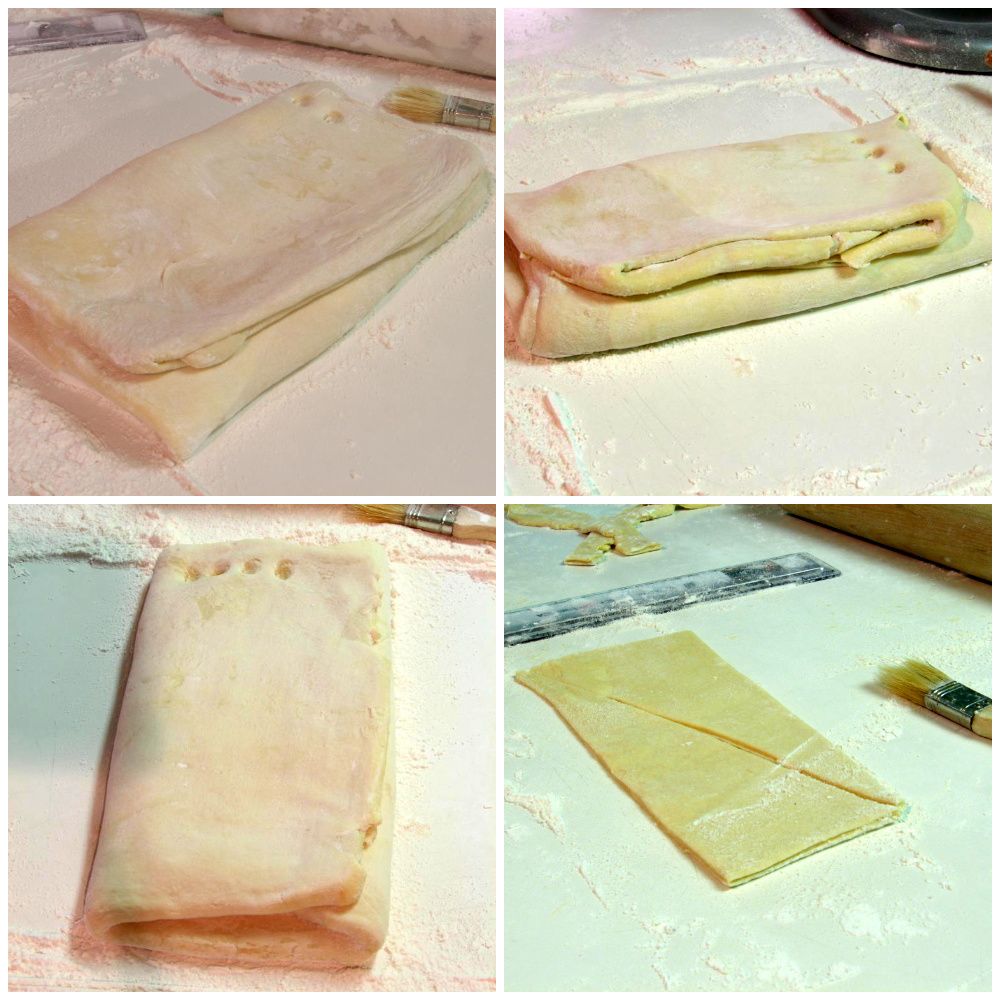
Clockwise: the second, third, and fourth fold and cutting the croissants.

Clockwise: the cute little shaped croissant, my first bake, and my first croissant and pain au chocolat cooling.
If you liked this post, please:
–Subscribe to Willow Bird Baking
–Follow Willow Bird Baking on Twitter
–Follow Willow Bird Baking on Facebook
–Give this post a thumbs up on StumbleUpon
 Other ways to share this post with friends!
Other ways to share this post with friends!


